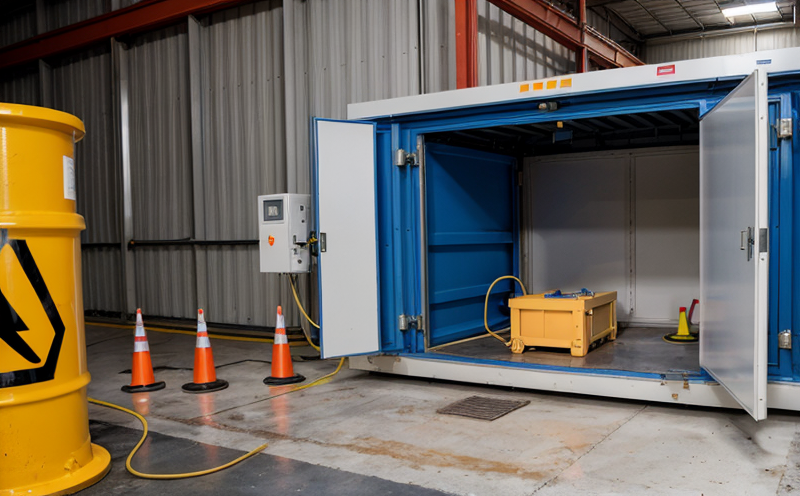Testing for Hazardous Environments and Compliance
In todays world, workplaces are increasingly becoming more hazardous due to the presence of chemicals, physical hazards, and other potential dangers. It is essential for employers to ensure that their employees work in a safe environment, free from any health risks. One crucial aspect of maintaining workplace safety is conducting regular testing for hazardous environments and ensuring compliance with relevant regulations.
Importance of Testing for Hazardous Environments
Testing for hazardous environments involves assessing the presence and levels of hazardous substances in the air, water, or soil at workplaces. This includes chemicals, heavy metals, pesticides, and other pollutants that can pose health risks to employees. Regular testing helps identify potential hazards, allowing employers to take corrective measures to mitigate them.
Some key reasons why testing for hazardous environments is essential include:
Compliance with regulations: Failing to conduct regular testing can lead to non-compliance with relevant laws and regulations, resulting in fines and penalties.
Protection of employees health: Exposure to hazardous substances can cause serious health problems, including respiratory diseases, cancer, and neurological disorders. Regular testing helps identify potential hazards, allowing employers to take preventive measures.
Prevention of accidents: Testing for hazardous environments can help prevent accidents caused by slips, trips, or falls on hazardous surfaces.
Maintenance of equipment and infrastructure: Regular testing helps ensure that equipment and infrastructure are in good working condition, reducing the risk of malfunctions and accidents.
Detailed Information on Hazardous Substance Sampling
Hazardous substance sampling involves collecting air, water, soil, or biological samples to determine the presence and levels of hazardous substances. This process typically includes:
Sample collection: Sampling is conducted using specialized equipment, such as pumps, fans, or vacuum cleaners, depending on the type of sample being collected.
Sample analysis: Collected samples are sent to laboratories for analysis, where they undergo various tests, including chromatography, spectroscopy, and bioassays.
Result interpretation: Laboratory results provide information about the presence and levels of hazardous substances in the workplace. Employers must interpret these results to determine potential health risks and develop corrective measures.
Some key considerations when conducting hazardous substance sampling include:
Proper equipment selection: Employers must select suitable equipment for collecting samples, considering factors like accuracy, precision, and sensitivity.
Correct sample collection techniques: Sampling methods should be conducted according to established protocols, including proper handling, storage, and transportation of samples.
Accurate result interpretation: Laboratory results require careful interpretation, taking into account variables like sampling methodology, analytical methods, and potential interferences.
Detailed Information on Compliance with Regulations
Compliance with regulations involves ensuring that workplaces meet or exceed relevant laws and standards. Employers must be aware of applicable regulations, such as the Occupational Safety and Health Act (OSHA), the Clean Air Act, and the Clean Water Act.
Some key aspects of compliance include:
Regular monitoring: Regular testing for hazardous environments is a critical aspect of compliance.
Record-keeping: Employers must maintain accurate records of sampling results, employee exposures, and corrective measures taken to mitigate hazards.
Employee training: Employees should receive regular training on potential hazards, emergency procedures, and personal protective equipment (PPE) use.
Some key regulations relevant to hazardous environments include:
OSHAs Hazard Communication Standard (HCS): This standard requires employers to provide employees with information about hazardous chemicals in the workplace.
Clean Air Act: This law sets standards for air quality and regulates emissions from industrial sources.
Clean Water Act: This act sets standards for water quality and regulates discharges of pollutants into waterways.
QA Section
Q: What types of hazards are typically found in hazardous environments?
A: Hazardous environments can contain a wide range of hazards, including chemicals, heavy metals, pesticides, asbestos, lead, mercury, and silica. These substances can be present in the air, water, soil, or biological samples.
Q: How often should employers conduct regular testing for hazardous environments?
A: The frequency of testing depends on various factors, including workplace conditions, type of chemicals used, and employee exposure levels. Employers must consult relevant regulations and industry standards to determine the required sampling frequencies.
Q: What are some common methods for conducting hazardous substance sampling?
A: Sampling methods include:
Air sampling: Collecting air samples using pumps or fans.
Water sampling: Collecting water samples from sources like pipes, tanks, or storage containers.
Soil sampling: Collecting soil samples from surfaces or underground.
Q: What is the importance of proper equipment selection when conducting hazardous substance sampling?
A: Proper equipment selection ensures accurate and reliable results. Employers should choose equipment that meets industry standards and regulations, considering factors like accuracy, precision, and sensitivity.
Q: How can employers ensure compliance with relevant regulations?
A: Employers must familiarize themselves with applicable regulations, such as OSHAs HCS, the Clean Air Act, and the Clean Water Act. Regular testing for hazardous environments is a critical aspect of compliance, along with maintaining accurate records, providing employee training, and implementing corrective measures.
Q: What are some key considerations when interpreting laboratory results?
A: Employers should consider variables like sampling methodology, analytical methods, and potential interferences when interpreting laboratory results. Accurate result interpretation is essential for determining potential health risks and developing effective corrective measures.
Q: Can employers outsource hazardous substance sampling to third-party laboratories?
A: Yes, employers can outsource sampling to certified laboratories that meet industry standards and regulations. However, employers remain responsible for ensuring accurate results interpretation and implementing corrective measures based on laboratory findings.

































